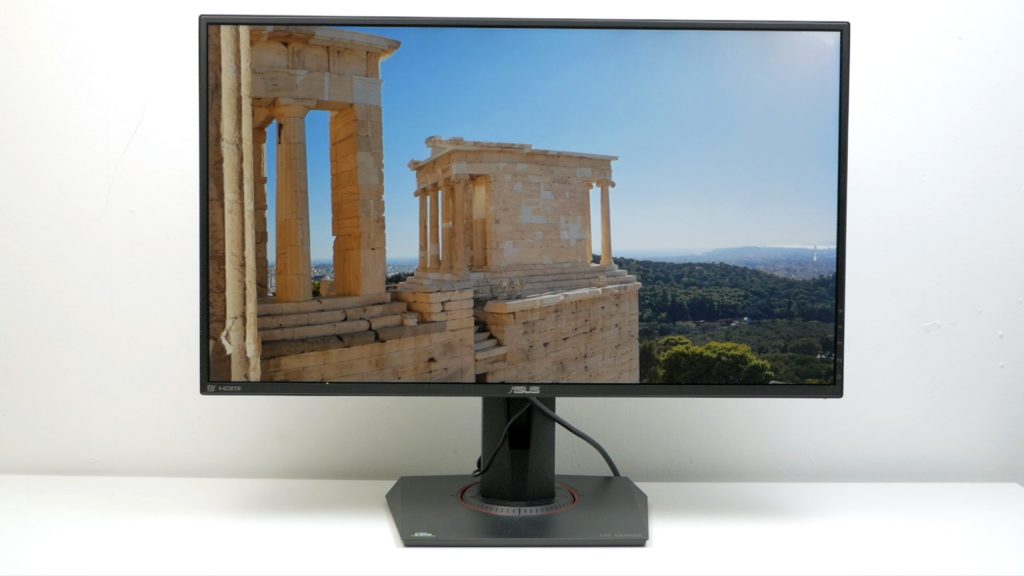Asus TUF Gaming VG279QM review

280Hz, IPS and ELMB combine to make the perfect gaming monitor
Introduction
The Asus VG279QM is an astonishingly affordable, ultra-fast gaming monitor that boasts a 280Hz maximum refresh rate, a 1ms response time and an IPS LCD panel. That’s a combination that should make for top-end gaming performance and great image quality, so does it deliver?
Asus TUF Gaming VG279QM specs:
- Screen size: 27inch
- Resolution: 1920 x 1080
- Panel type: IPS
- Maximum refresh rate: 280Hz (overclocked)
- Response time: 1ms
- Inputs: DisplayPort 1.4, 2 x HDMI 2.0
- Stand adjustability: Height, Tilt, Pivot, Rotation
- Adaptive sync: Freesync and G-Sync
- Extras: VESA mount, ELMB-sync
- Speakers: No
Asus TUF Gaming VG279QM price
The Asus TUF Gaming VG279QM price is under $400, making it a great value 27-inch, IPS gaming monitor.
Buy now from Amazon:
Asus TUF Gaming VG279QM review
Well, one thing this display can’t claim, is a particularly premium design or set of physical features. The bezel round the edge of the screen, while narrow and low-profile, doesn’t sit below the surface of the screen like on some displays, so it doesn’t look quite as sleek. The base and stand are all plastic too, rather than the solid metal designs you tend to get on more expensive displays.
You also miss out on any RGB and this display doesn’t even have a USB hub.
All that said, it’s a perfectly smart looking display and you get the essentials. The stand’s base is nice and compact, so doesn’t get in the way of your keyboard or other desk paraphernalia and it offers height, rotation and tilt adjustment. It can also be removed to attach an alternative monitor arm or stand.
Connectivity is what you’d expect as well, with one DisplayPort 1.2 and two HDMI 2.0. The power supply is external, though, so there’s a power brick to store somewhere.
Asus has slipped up when it comes to this display’s onscreen menus and their controls. There’s a mini joystick and four buttons used to navigate the menus and all the controls are snappy, responsive and easy to locate. The menus also respond rapidly and are logically laid out with all the options you should need, including plenty of colour and other image quality adjustments and there are loads gaming settings too.
All of which brings us to the display itself and the elephant in the room here is that this is a 27in display yet it still uses just a 1080p resolution. In a world where retina displays and 4K is all the rage, having such a low resolution on this size of display really does feel like a bit of a stretch, literally. It’s as useable as any other 1080p display but it certainly isn’t sharp.
Asus TUF Gaming VG279QM video review
Otherwise, this display offers up fantastic image quality. The IPS panel produces the excellent viewing angles you’d expect and when it comes to colour balance and accuracy, it’s near perfect right out of the box. Just adjust the brightness to your liking and away you go. The only very minor caveat is that contrast is a still perfectly ok 937:1, but a key competitor, the Acer XB253Q has a noticeably better contrast of 1280:1.
You also don’t get any sort of meaningful HDR credentials here. It conforms to the basically pointless DisplayHDR 400 standard but the colour gamut only extends slightly to 113% sRGB and you don’t get any clever backlight manipulation to boost contrast. But all that’s fine. This monitor is all about providing blistering gaming performance without compromising on core image quality, not about pushing the limits of HDR.
Talking of gaming performance, this display is as good as you’d hope. The headline figure of 280Hz, that’s achieved by overclocking the display from its default 240Hz, doesn’t really make a difference that I could detect but is always nice to have and overclocking doesn’t affect image quality.
As per usual, the claimed 1ms response time isn’t a true reflection of average response time but this is still a very fast display. That said, I could still immediately tell the difference between this display and other 240Hz displays that use TN panels. The latter’s lower average response time is still noticeable, even at 240Hz.
Freesync and G-Sync adaptive sync technologies are on hand too and both work as you’d expect, so you get smooth gameplay that’s free of tearing and stuttering on both AMD and Nvidia graphics cards.
The real piece de resistance of this monitor, though, is its inclusion of Asus proprietary Extreme Low Motion Blur or ELMB-sync setting. This is one of those blur reduction modes that flashes the backlight of the display on and off, to reduce eye tracking motion blur and perceived response time. However, unlike other such modes, this one works with adaptive sync so you can enjoy the amazingly clear and fast response of this display without having to compromise and turn off freesync or G-Sync.
This single ability transforms blur reduction from being a bit of a niche feature that you might turn on once in a while to being something you can just set and forget, and it’s a huge boon for Asus displays that it’s an exclusive technology for the time being. Although notably it doesn’t work at 60Hz and introduces horrible image overshoot at 120Hz, so it’s not much use for console gaming.
All of which means that I’m utterly won over by this monitor. It has none of the frills but all of the essentials and delivers fantastic image quality and exceptional gaming performance all for under £350 or under $400. The low resolution on such a large screen may not be for some but then you can always get the smaller but otherwise identical VG259QM for around the same price.



